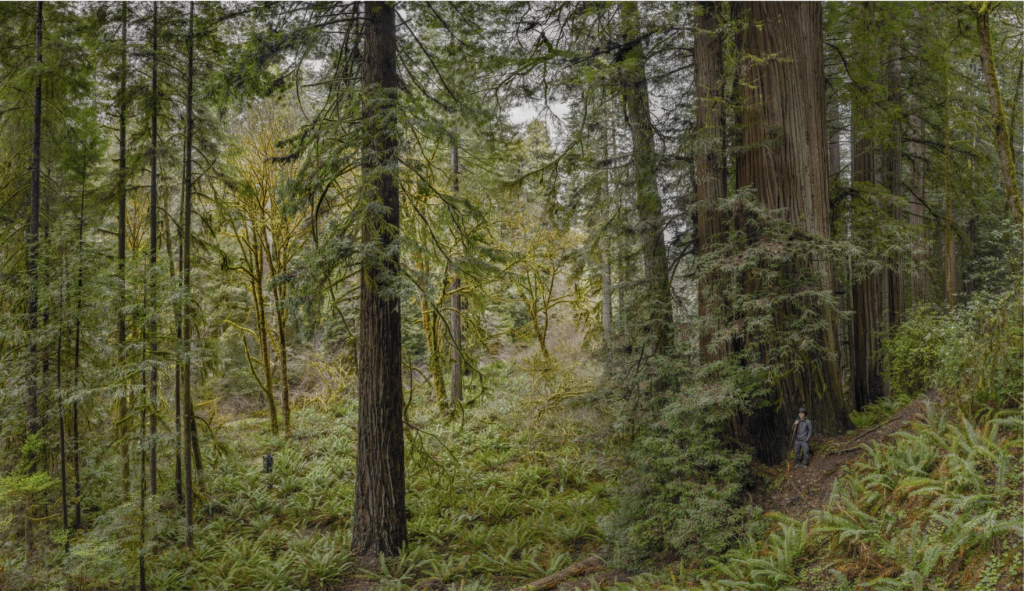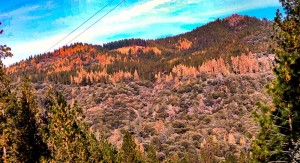
Tonight on State of the Bay, we’ll hear all about the upcoming Pride celebrations from SF Pride director Suzanne Ford.
Then we’ll explore why income inequality in California is reaching new extremes. Did you know that the top 1% of the wealthiest households in Silicon Valley hold 65X the wealth of the bottom 50% of households in the region? Joining us will be:
- Batya Ungar-Sargon, author of Second Class: How the Elites Betrayed America’s Working Men and Women
- Anji Buckner-Capone, Ed.D, investigator of the Silicon Valley Pain Index
Finally, photographer Stefan Thuilot, founder of the California Forest Project, talks about his extraordinary exhibit of California forests, before and after wildfires.
Tune in at 91.7 FM in the San Francisco Bay Area or stream live at 6pm PT. What comments or questions do you have for our guests? Call 866-798-TALK to join the conversation!
 In California, trees in the Sierra Nevada are dying due to climate change-induced droughts. Worldwide, humans are in dire need of sequestering more carbon from the atmosphere — a process that trees embody.
In California, trees in the Sierra Nevada are dying due to climate change-induced droughts. Worldwide, humans are in dire need of sequestering more carbon from the atmosphere — a process that trees embody.
So could using more wood products from dead and small trees in tall buildings be a solution? Specifically, cross-laminated timber (CLT), with precisely cut layers of wood layered on top of each other, provides a lumber building block that is efficient, sturdy — and can be comprised of lumber from those same small and dead trees.
Europe has been using cross-laminated timber for a while, and now the United States is catching on. The benefits for the climate are potentially multifold. Since one of the challenges to thinning forests to prevent devastating fires and removing dead trees from drought-stricken areas is that it’s expensive, cross-laminated timber presents a potential economic revenue stream to help fund the projects. Otherwise, timber harvesters have to cut big trees to make the thinning work pencil out, while cash-strapped governments lack the public dollars to tackle such a large-scale problem.
Meanwhile, wood in tall buildings means that sequestered carbon from the trees is captured in the building, instead of released to the air from inevitable wildfires. Not to mention that more tall buildings means denser urban environments that can reduce vehicle miles traveled and energy and water usage.
Policy action will be needed to deploy environmentally beneficial cross-laminated timber, from permitting changes on the harvesting, building codes that allow cross-laminated timber, and demonstration projects that prove the feasibility and desired environmental outcomes. But given the scale of the challenge, we’ll need to explore innovative solutions like cross-laminated timber as a solution for both healthy forests and the climate.
It’s looking pretty gloomy in the coastal and mountain forests around the state. As the New York Times reports, since 2010, an estimated 66 million trees have died, leading to what may likely be some permanent changes to these ecosystems, as they shift from forest to grass and shrub lands:
Scientists say rarely is one culprit to blame for the escalation in the state’s tree deaths, and the resulting fire hazard. Rather, destruction on such a broad scale is nearly always the result of a complex convergence of threats to forest ecosystems.
Chief among them is a severe, sustained drought in the Sierra Nevada that is stressing trees and disabling their natural defenses. Climate change is raising temperatures, making for warmer winters. No longer kept in check by winter’s freeze, bark beetle populations are growing. Separately, a nonnative, potent plant pathogen is thriving in the moist areas of the North Coast, introduced to California soil by global trade. Opportunistic fungi are standing by, ready to finish the kill.
 It’s all exacerbated by a legacy of terrible forest management over the past century-and-a-half or so, which I’ve witnessed firsthand in places like Lake Tahoe.
It’s all exacerbated by a legacy of terrible forest management over the past century-and-a-half or so, which I’ve witnessed firsthand in places like Lake Tahoe.
In the short term, we should clear these trees out and use them as low-carbon energy sources. But in the long term, we need to aggressively thin the forests and go back to traditional land management practices of regular, controlled burns.
It’s our best hope against the ecological onslaught facing these beautiful lands.


